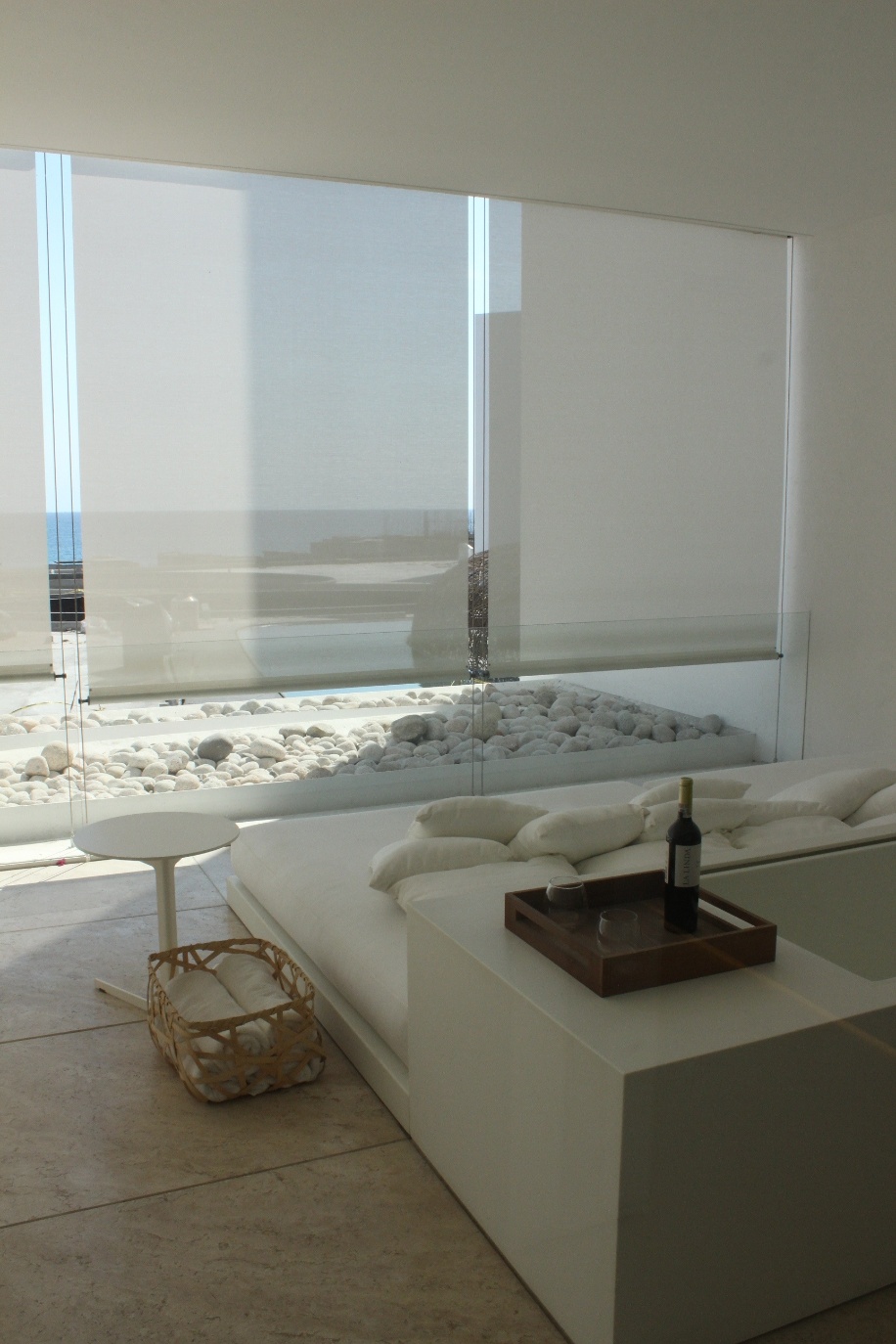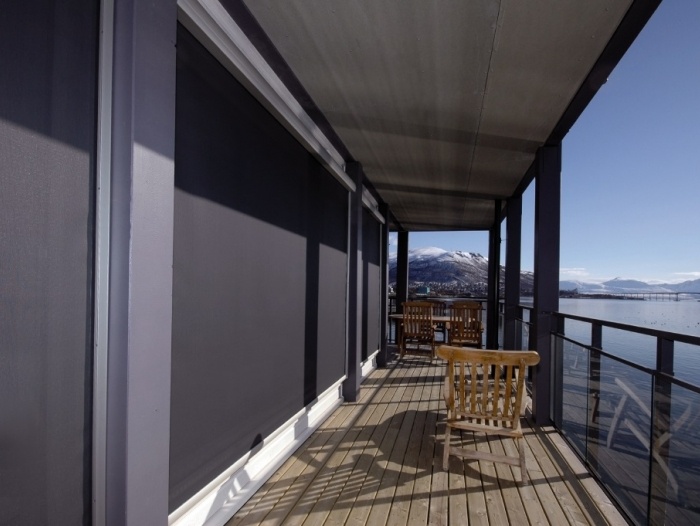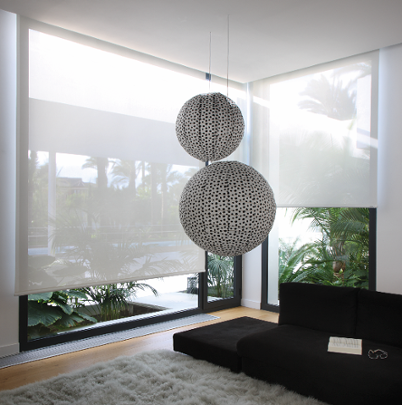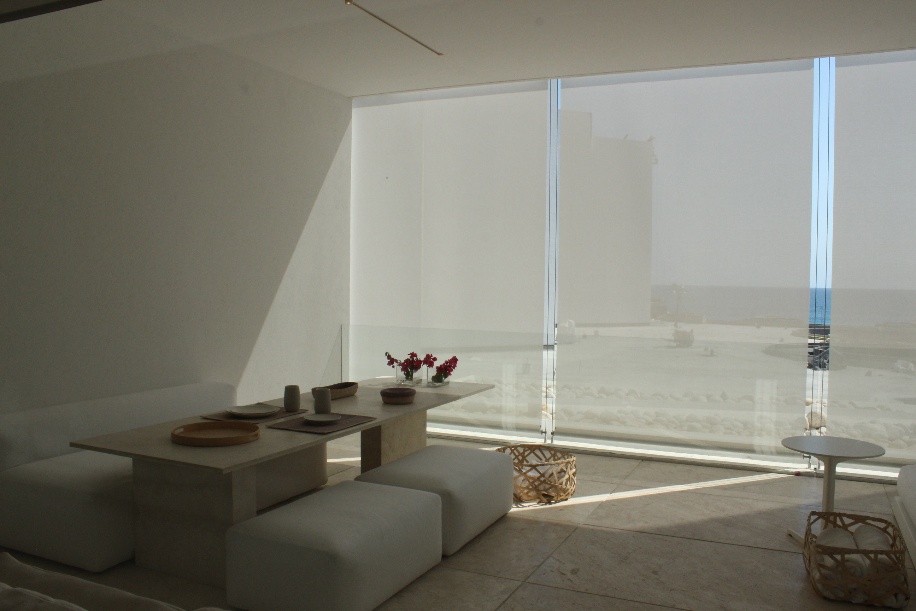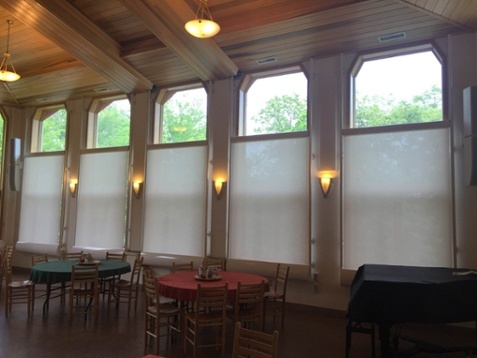How do window shades and in particular exterior solar shades play a role in “sustainable design”? To understand the role that these shades play, we need to understand what is sustainable design. A good definition comes from the AIA website where it states that “sustainable design is a collaborative process that involves thinking ecologically— studying systems, relationships, and interactions—in order to design in ways that remove rather than contribute stress to systems”.
The last part of that statement – in order to design in ways that remove rather than contribute stress to systems – has an important association to exterior solar shades. This next generation in window coverings succeeds as a sustainably designed solution because it removes stress to systems by reducing over 85% the amount of solar energy entering a space and thereby reducing the amount of energy required for cooling. This is a certain qualifier for making the exterior solar shade a sustainable solution.
It is true that putting any type of solar shade fabric on the exterior side of a window can reduce solar heat gain. However, the critical question to ask is: What type of exterior solar shades are the best at reducing solar heat gain as well as, withstand high winds, have a long useful lifespan, is easy to maintain and provides a quick return on investment? Let’s examine these challenges to determine the three best exterior solar shade solutions.
High Winds
Any kinetic device installed on a building’s façade must be able to survive windy conditions. This does not mean that the shades can be fully open and functioning with winds gusts higher then 35 miles per hour, which are as a reference point, tropical depression levels.
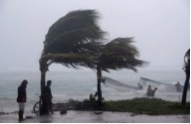
Exterior solar shades have an important backup safety device, the wind sensor. The wind sensor is installed along with the shade to send a signal to the motor to retract the shades when gusts of wind hit a specific preset limit. For all of our systems we recommend that 30-35 miles per hour should be a standard setting. While some systems can withstand winds far in excess of 35 MPH, there is no need to have a shade down during such stormy conditions and if the shade is very tall, it may take about a minute or so for the shade to fully retract leaving the system potentially exposed for that period of time.
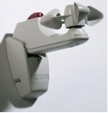 Wind & Sun Sensor
Wind & Sun Sensor
Lifespan
Always a concern for any outdoor functioning system is how long it will last before needing to be replaced. While the warranties for the components such as the fabric and the motor are generally 5 years, the systems should last at least 25 years or more. If treated properly, the aluminum extrusions can last even longer with anodizing. Anodizing is an electrochemical process that converts the metal surface into a decorative, durable, corrosion-resistant, anodic oxide finish.
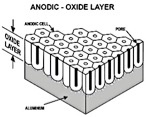
Maintenance
Similar to any exterior installed device, exterior solar shades require scheduled maintenance. However, there are only a few components that are used in fabricating the shades, which are the aluminum extrusions, cables, motor, and fabric.
Aluminum Extrusions – There is no maintenance required for any of the aluminum extrusions except an occasional washing. If properly anodized, the extrusions will have decades of performance without deterioration.
Cables – For the cable guided solutions, the 6mm cables need to be checked periodically for proper tension.
Zippers – The Zip shades have a zipper welded to the fabric edge. While these welds are permanent, an inspection of the weld is advisable from time to time.
Motors – The line voltage motor is probably the only part that may ever need to be replaced. The motor is located in the shade roller tube and is easily repaired.
Fabrics – The only maintenance ever needed on the fabrics is an occasional cleaning with a soap and water.
Controls – The controls on InSync Solar systems are placed in a centralized interior location for easy programming and diagnostics. Based on dry contact signals, as opposed to data and software control, the system is easy to access, operate and maintain.
Cost Comparison
There is a wide held belief that exterior solar shades cost more then interior shades. This is not the case! Let’s look at a price comparison between an interior VS and exterior shade. Both shades are motorized and in a basic fabric.
Interior Solar Shade – Motorized 100” x 100” with an aluminum enclosure. Cost without installation – $1125
Exterior Cable Guided Solar Shade – Motorized 100” x 100” with an aluminum enclosure. Cost without installation – $1115
As you can see the price is just about the neile. The point is, is that if you are planning to do a motorized shade anyway, why not put it on the exterior where you can receive three times better performance and a faster payback then an interior shade.
The Criteria
The criteria for considering a successful exterior solar shade as described in this article is where the system can meet four specific points, which are:
- Can withstand adverse weather conditions
- Have many years of service in providing solar heat gain reduction.
- Is easily maintained in order to extend its lifespan.
- The cost provides a return on investment at least 3 times more then interior shades.
In seeking out the 3 best exterior window shades based on the requirements previously described, our selections are:
These exterior shading systems are protected by harsh wind conditions by rolling up into an aluminum enclosure when it is signaled by a wind sensor or commanded by a controller. With care the fabric, cables and motor can provide many years of comfort, as well as a return on investment many times its cost.
Cable Guided Exterior Shade
This is the most basic exterior window shade. It is a gravity assist shade that simply rolls up and down upon command. The fabric selection will play a big part of its performance in reducing solar heat gain and glare (as it would for any of the systems described below). The cable guided exterior shade is the most economical of the 3 solutions.
Tension Force Exterior Shade
This patented innovative shading system allows the shade to function at any orientation, such as: top down, bottom up, around curves or any skylight configuration. It’s unique tensioning device keeps the fabric taut over wide and long spans of glazing, preventing unsightly sagging.
Zip Exterior Shade
The Zip Shading Solution is manufactured with a zipper like detail permanently welded to the vertical edges of the fabric. These zippers run in tracks on each side and in turn prevent the fabric from being pushed out of the aluminum side channels. The Zip Shading Solution can withstand wind gusts of up to 90 miles per hour, which makes it a premium exterior shading solution.

Conclusion
To determine the solution, which is best for your project, please set up a free consultation with one of our window shade engineers at InSync Solar. We will be happy to discuss your concerns and how to provide a long lasting, easy to maintain system that reduces stress on your building system by lowering the costs needed for cooling.
Reduction over 98% with Exterior Solar Shade
{{cta(‘7fc41619-393a-44f3-bfac-65f105d8a90e’)}}

